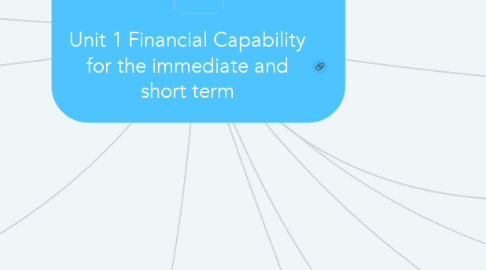Unit 1 Financial Capability for the immediate and short term
by Nicola O'Hare


1. Definition of money
2. How to open an account
3. advantages & disadvantages of each payment method
4. Topic 1
4.1. The purpose of money
4.2. The functions of money
4.3. Purpose of money & its features
4.4. The purchasing power of money
4.5. Personal life cycle and borrowing/saving
5. Topic 2
5.1. Stages of the life cycle
5.2. Needs, wants & aspirations
5.3. Life events and financial requirements
5.4. Attitudes to risk
5.5. Socio economic trends
6. Topic 3
6.1. Different payment methods
6.2. when is each the most suitable, depending on: convenience, which methods th seller accepts, how quick the tranaction is, how safe the method is.
7. Topic 4
7.1. Different current accounts available and the different customer requirments they are designed to meet.
7.2. Hoe to use statements to montor transactions
7.3. How to close an account
8. Topic 10
8.1. Insurance
8.2. revising budgets to meet unexpected expenses
8.3. emergency savings
8.4. borrowing and dealing with unexpected income
9. Topic 11
9.1. options for people who can afford to make some repayments
9.2. options for people who are insolvent
9.3. advantages & disadvantages of different solutions
9.4. the importance of getting free, expert advice when dealing with debts
10. Voluntary codes of conduct
11. Bartering and its limitations
12. tax return on paper or online
13. Topic 5
13.1. Why people save
13.2. The impact of inflation and tax on savings
13.3. Product features that affect the return savers receive
13.4. How safe the deposits in savings are
13.5. ways of choosing between savings products, taking into consideration personal circumstances and product features
14. Topic 6
14.1. Why people borrow
14.2. The cost of borrowing - APR & EAR
14.3. Key features of overdrafts, CC and personal loans
14.4. The different borrowing needs that the different products are designed to meet
15. Topic 7
15.1. Differences between banks, building societies, credit unions, NS& I and the post office in terms of their :
15.1.1. Products
15.1.2. Ownership
15.1.3. Size
15.1.4. History
15.1.5. trade associations
15.1.6. Different communication methods :Branch, online, telephone,mobile,post

